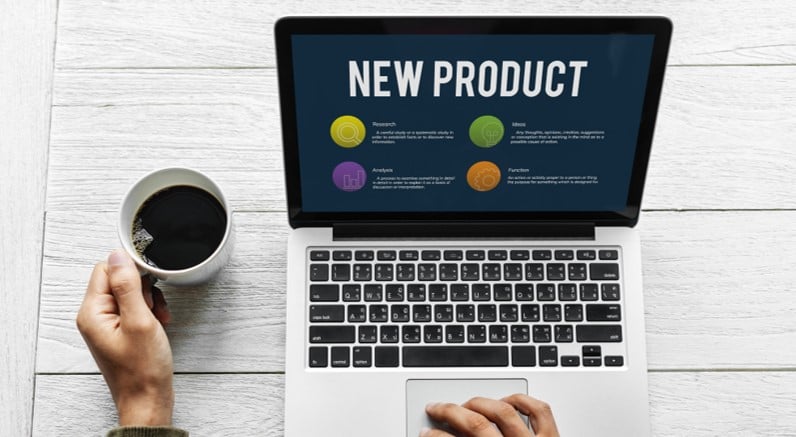Product training has gotten a bad rap lately. In a lot of companies, it’s the only sales training that’s offered. Many in sales enablement see product training as a necessary evil: “Of course we’ll build a new webinar on the product enhancement…” (groan)
Product training is important, but not sufficient in fully enabling the modern sales rep. So how do we re-imagine product training so it’s done right? The key is reframing the debate. It isn’t a question about product OR skill training. The right strategy is integration of the two, embedding skill and process components into product training. In this approach, product training becomes a Trojan horse to reinforce elements of your sales methodology and process.
Here are some tips to integrate product training and sales skill development:
1. Communicate the product through the lens of the customer’s business. Why in the world should my customers care about this? This is the single question that runs through the head of every rep as they watch a product training demo.
Sure, the new UI looks great, and the 50 new features you added will seem like customers will get more “value.” But really, how will these features or changes impact the customer’s business?
The framing of any product training should start with the problems and issues your customers are facing. Literally and directly communicate: “Here’s the gap between what our customers are currently doing and what they want to be doing. This product/feature helps them close this gap by… And this means they will now be able to…”
A simple test to make sure your product training resonates with the sales team is to make sure you can answer the “so what?” question to key statements you want reps to know.
2. Align the product training to specific touchpoints in the sales experience. Start with the end in mind. Imagine that you’ve recently sold this new product/feature to a customer, and then work backgrounds.
- What was the business case that the customer needed sign-off on the deal? How was the initiative or solution funded? Who had ultimate go/no-go authority in the decision?
- How did you get the customer to agree on your particular solution? Who and what functions were involved in the solutioning and requirements definition process?
- What was the discovery experience that identified the potential need or opportunity? Not all problems are worth addressing, so how did you guide the buyer in prioritizing this issue?
- What did the initial outreach look like for this product? How did the rep pique the interest of the prospect to engage in a discovery conversation?
Answer these questions to identify the full list of skill and process elements you need in your product training. The best product training connects the dots for the rep. It translates product features into the key touches of the sales process.
This same approach works even with a new product that hasn't yet been sold to a customer. Tap into the street smarts of your reps by conducting a quick internal focus group. Review the new product concept with a few of your best sellers and then talk through a hypothetical deal, step-by-step. This exercise will provide great product and marketing insights into what is needed to deliver differentiated customer conversations about the product.
3. Define how reps can help their champions position the new product/feature internally. Buyer enablement is critical component for product training. How are you training your reps to help your buyer buy from you?
It’s great that the new product / feature is on the website. And the shiny collateral looks impressive. But what can the rep put in the hands of their champion to equip them to position your product on your behalf within their own organization?
An effective buyer enablement plan is missing from most product training. But it’s the key to supporting the sales team as they take the product to market. Consider the full spectrum of buyer enablement content needed for today’s complex solutions:
- Funding guide - How can the rep help the customer think about funding or budgeting options for paying for this product?
- Alignment guide - What can you provide your champion to have an internal stakeholder meeting about this product? What do they need to get everyone on the same page with a favorable view of your offering?
- Process guide – How can the rep help the champion think about all the steps required to make a successful decision, implement your solution, and realize the ROI?
- Alternative guide – What does your champion need to assess their alternatives and why your product is the best option? This should include how buyers should consider the alternative of buying vs. building.
- Scoping guide – For large and complex products, how can the rep help the champion understand the sequencing and phasing of the solution? What do they need to make budget more manageable or the process feel less disruptive in internal discussions?
Define the specific skills elements for the product, including:
- The most common selling scenarios and how to align the right approach to these situations
- Language and power messages to position the product/feature (why this product vs. status quo?)
- The most effective discovery questions, including the best sequencing of the questions
- The most common objections and how to respond
- Comparison and rebuttal language for how the new product/feature compares to competitor offerings
There’s always a risk that playbooks are seen as reference materials, collecting dust in the rep’s home office or are pitched after the training session. Ramp up the practicality of your playbooks with the skill and message elements tailored to the product.
Improve field reinforcement with separate skill guides for the managers. These would include guidance for conducting product-specific role plays and other field coaching activities.
Incorporating these aspects will make your new product launches and regular update training sessions look and feel different. It will enable your reps to see where product conversations fit and the practical steps they need to execute with customers. This integrated product and skill training mindset is what’s needed to drive the sales results you need.
Contact us for more ways to equip your reps to deliver a differentiated sales experience.
Catch up on last week’s blog about what sales enablement leaders need to do in their first six months, and check out additional blogs here.
About The Author
 Ralph is a partner with The Brevet Group, and for 20 years he has led sales performance teams in the United States and Asia. Recently he also served as a sales leader in both the media and technology industries. Ralph’s work has focused on a unique blend of management consulting and sales enablement to help companies execute their sales strategies. Prior to this role, Ralph was the APAC sales effectiveness leader at Mercer.
Ralph is a partner with The Brevet Group, and for 20 years he has led sales performance teams in the United States and Asia. Recently he also served as a sales leader in both the media and technology industries. Ralph’s work has focused on a unique blend of management consulting and sales enablement to help companies execute their sales strategies. Prior to this role, Ralph was the APAC sales effectiveness leader at Mercer.




